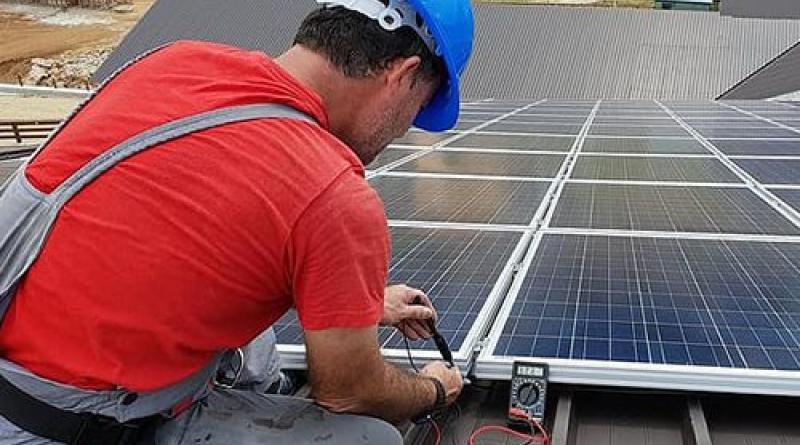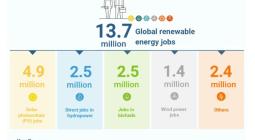U.S. Gains 400,000 Clean Energy Jobs Since 2022, E2 Estimates

A non-partisan business group that advocates for clean energy estimates that 403,000 jobs will be created by the 210 major energy projects announced since the Inflation Reduction Act took effect in the United States in mid-2022.
At least US$86 billion in investments have been announced, with the biggest job gains in expected in the electric vehicles, battery storage, and solar energy sectors, said the report issued last Wednesday by Environmental Entrepreneurs (E2).
The IRA, signed August 2022, contains $500 billion in new federal spending to reduce health care costs, increase tax revenues, and address climate change by offering incentives so clean tech companies innovate and manufacture in the U.S., The Associated Press reports.
“We’re in the biggest economic revolution we’ve seen in generations thanks to the Inflation Reduction Act and other clean energy policies,” said E2 Executive Director Bob Keefe.
The EV sector had the strongest response to the IRA. It represents 58% of investments when the projects were being announced and is expected to support 185,700 jobs annually for five years. Over the same period, battery storage and solar are expected to support 48,000 and 35,000 jobs per year, respectively.
New jobs indirectly related to the announced projects could include lumber mills hiring more staff to handle growing demand for construction materials, and restaurants getting busier because construction workers at new factories are starting to eat there.
Form Energy is a company building multi-day batteries in Weirton, West Virginia that committed to creating 750 permanent jobs at its factory by 2028. CEO Mateo Jaramillo traced the company’s ability to scale quickly to support from the state and federal governments.
“We would not have Weirton without West Virginia, and we would not be going as fast as we’re going without the IRA,” Jaramillo said.
Christopher Chung, CEO of the Economic Development Partnership of North Carolina, a non-profit public-private organization, said North Carolina is one of the many states in the South seeing growing clean technology investment. “Bipartisan legislation at the federal level has really juiced the pipelines of activity for us when it comes to economic development, especially attracting foreign direct investment,” he said.
Chung said many North Carolina community colleges partner with private companies to develop local training programs and job opportunities. “As community colleges develop a rhythm for training the type of workers these companies need, that’s going to enhance the appeal of our workforce and state as a business location to more and more these clean energy companies,” he said.
Such a significant investment in climate action comes with hurdles to cross in the labour sector, experts say.
Although investments in clean energy are “on hyperdrive,” other factors were supporting the clean energy labour transition before the IRA, said Joseph Kane, a researcher at the Brookings Institution. These factors include growing pressures to reduce climate pollution, changing consumer behaviours, and clean technology becoming cheaper and more efficient.
Kane said state and local leaders who receive funding for clean energy will have to be increasingly attentive to work force development, since some people aren’t aware of these job opportunities or don’t have access to relevant training.
Labour shortages in the clean energy sector, particularly in construction, manufacturing, and electrical work, are notable, said Thomas Kwan, director of sustainability research at Schneider Electric, an energy management and industrial automation company.
Kwan said other circumstances that could affect job creation include a long, complex permitting process for clean energy projects, as well as critical mineral supply chain issues, such as geopolitical forces and changes that could happen in the broader energy market.





